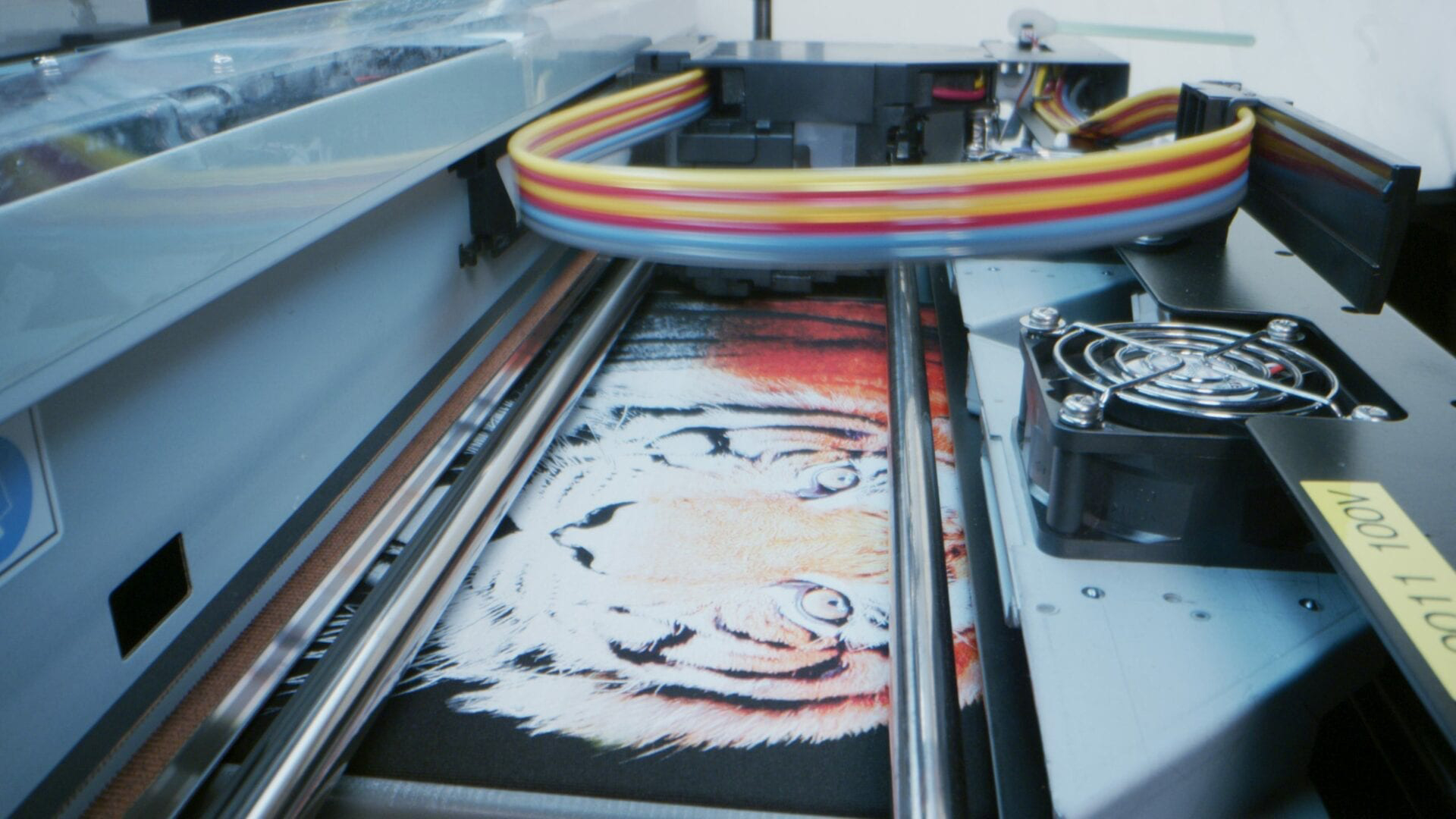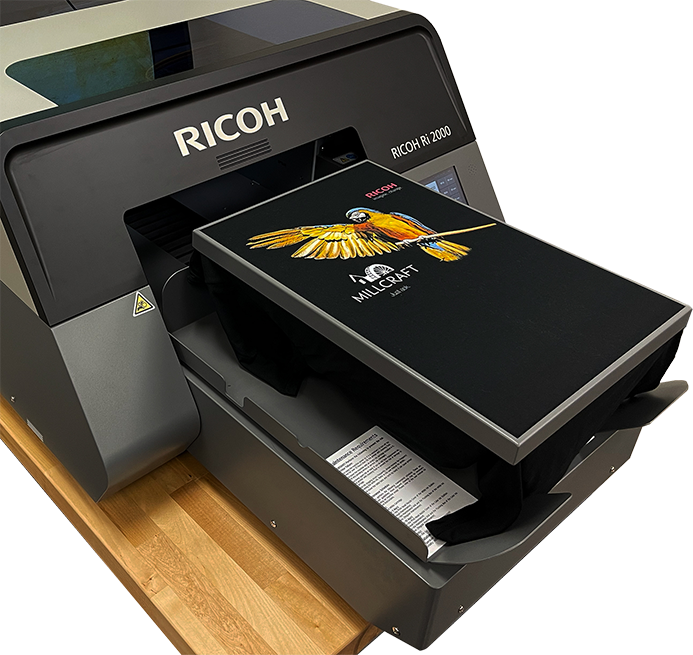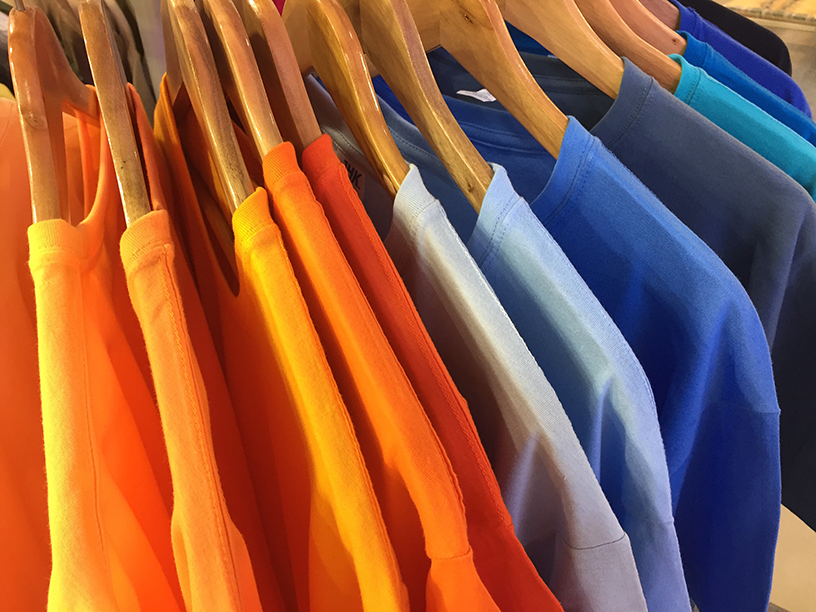Direct-To-Garment (also known as DTG) printing is almost exactly how it sounds. DTG printing is a process of printing directly on textiles and other items using inkjet technology. It really is as cool as it sounds.
A DTG Printer is similar to how your home office printer works. Except, instead of using paper, in a DTG printer it’s textiles like shirts, face masks, hoodies, shoes, etc. The printers have a flat surface, called a platen, that you lay your garment down onto. Once the print button has been pressed, this platen will go into the printer and start the print process. Once it’s done printing, the platen will come back out for you to see the printed product.

DTG was first introduced in the United States in 1996 and is a very young segment in the textile industry compared to other printing methods. In 2019, DTG was valued at over $2.5 billion with a compound annual growth rate of 10.5% through 2021. By 2024, this segment will grow to 40%, making DTG the fastest growing segment in the textile industry. With the amazing technology that is built in the RICOH Ri 2000, not only will you get amazing vibrant prints, but you will be able to print quicker too. In many cases, it is twice as fast compared to other printers.
To find out more about how Millcraft’s DTG Solutions can help you get into the game of DTG printing, reach out to one of our DTG Specialists.
Continue Reading

Why Commercial Printers Should Consider DTG
If you haven’t already heard, there is a shortage in the paper supply chain. Not only does this impact your clients, but it will also impact your revenue. Having multiple ways to help your current clients, and help new clients, will greatly reduce your redundancy by...

How can DTG help grow your business?
Print-On-Demand is on a huge surge with no slowing in sight. Direct to Garment provides an efficient and cost-effective way to capitalize on this growing segment. As customer buying habits continue to move towards an on-demand mindset, print shops need to adapt....

